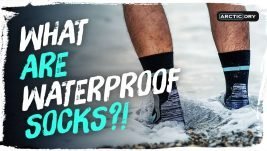The Best Mid Layer for Hiking Round the UK
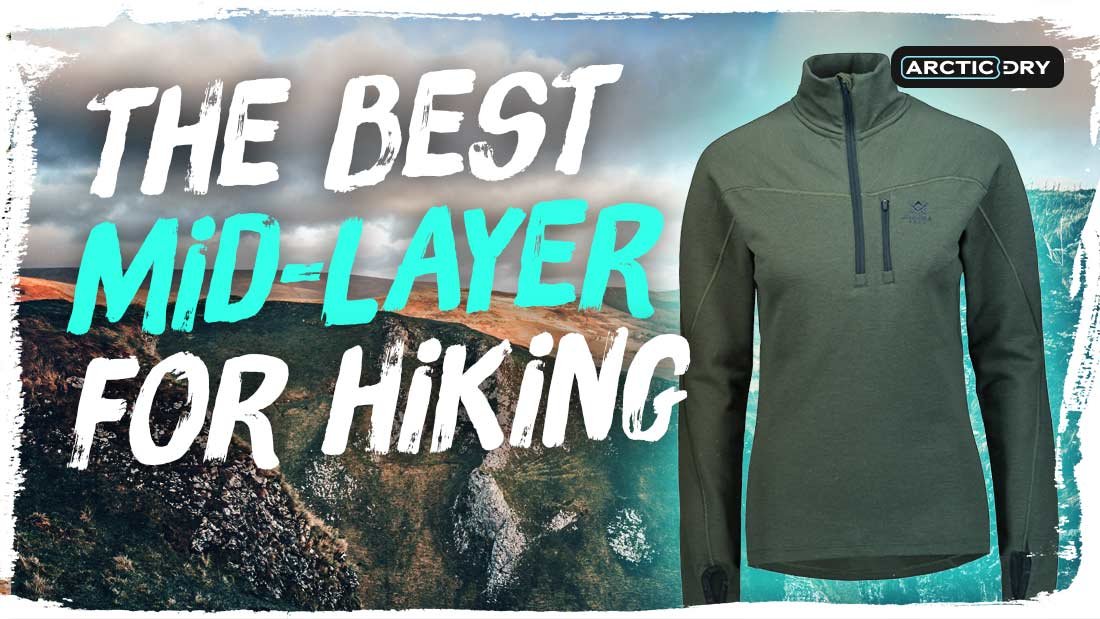
Contents
Apart from waterproof boots and base layers, having a reliable mid-layer goes a long way to make sure you have a comfortable hiking adventure. It could be the difference between a fun day in the outdoors and a cold frustrating one.
Traditionally worn above your hiking shirt and underneath your hiking jacket, mid-layers play the crucial role of managing body heat.
They are generally made out of an insulating fabric that retains the heat generated by the body while being breathable enough to allow vapour to escape outside when you start perspiring.
But not all mid-layers are created equal. It takes a great deal of due diligence to get something that works best for you. With so many brands in the market, you might be in for a never-ending search for the best. In this article, we are saving you all the trouble by reviewing the best mid-layer for hiking round the UK.
What is a Mid Layer?
Mid-layers, also known as mid-weight layers, are garments worn primarily for insulation purposes. They are usually worn over the base layers when outdoor conditions necessitate and beneath the shell layer. Unlike base layers and outer layers, you may wear more than one mid-layer if it gets cold enough.
What Materials are Used for Mid Layers?
The most important feature to look at when selecting a good mid-layer is the material used.
Generally, fleeced mid layers have been the common fabric for years but recently, manufacturers are employing more organic materials such as Merino wool and Alpaca as an excellent mid-layer option.
You’ll realise that each of these materials has its pros and cons, and there is actually no clear winner when comparing among them. For some situations, the best choice tends to be a combination of the three!
Does Fleece Make a Good Mid Layer Material?
Fleece is a general term used to describe synthetic or plastic materials. Most of the mid-layers you’ll come across in the market today use synthetic fleece materials, with polyester being the primary option.
Other synthetics used include things like Elastane and Spandex, known for offering extra stretch. One of the most endearing aspects of fleece is that it is usually the cheapest mid-layer option you can find.
The materials are also quite versatile and can be manipulated in a variety of ways, including being blended and made into grid patterns and fluffiness. Not to mention that they last a long while.
On the flip side, fleece smells faster compared to organic mid-layers and, the plastics they are made out of play a role in the increase of the carbon footprint n the universe. Furthermore, they get punctured when you expose them to fire.
Can You Use Merino Wool and Alpaca as Mid Layer Material?
Merino Wool refers to a natural fibre sourced from sheep while Alpaca is also a natural fibre from Alpacas. Ordinarily, Merino Wool is used for base layers in hiking gear and tends to be a less preferred option for mid-layers compared to synthetics.
However, it can be a versatile choice when blended with synthetics, given its thermoregulation attributes.
Meanwhile, Alpaca is a relatively new prospect that is becoming more popular by the day due to its shared properties with Merino Wool. Both these materials offer great insulation, even when damp, and this is what makes them a nice option for an active mid-layer. They also resist odour better than synthetics and are inherently breathable. However, they are also pretty expensive and less durable than synthetic options.
What is Synthetic and Down “Puffy” Mid Layer Insulation?
Synthetic and down puffy is not easily used as a true mid layer but may be considered when it’s extremely cold. This is when you are not as active, hence there is less body heat being generated.
The biggest issue with this type of puffy insulation is that they lose their insulating properties when they get wet, either from sweating or when it rains. For hiking, they are best used when the conditions dictate that you’re relatively not very active.
Best Mid Layer for Hiking Round the UK
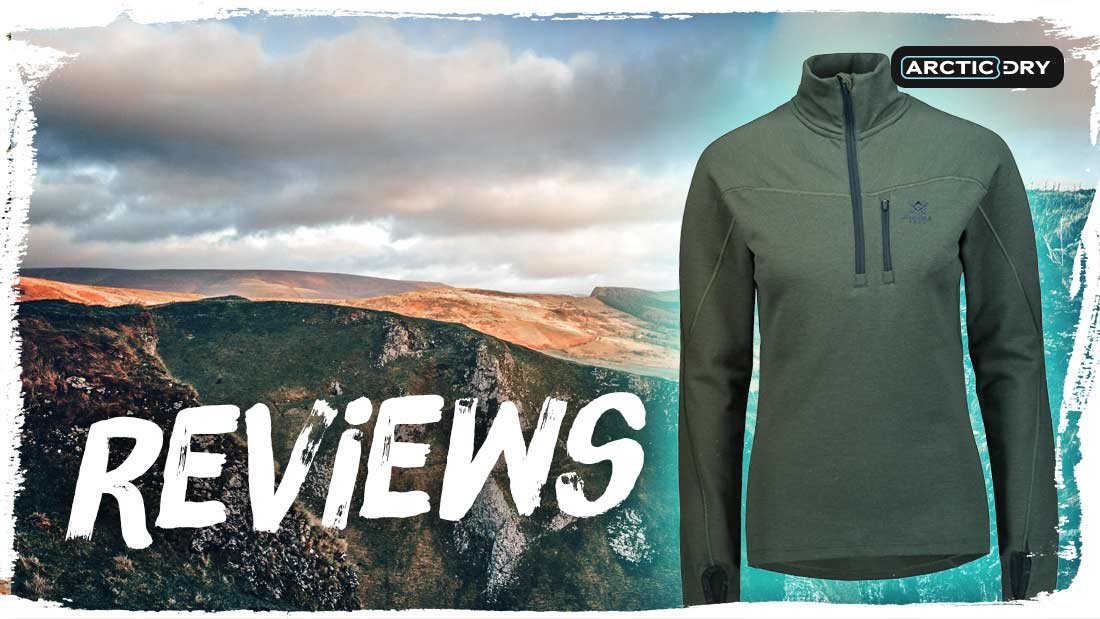
Columbia Steens Mountain 2.0
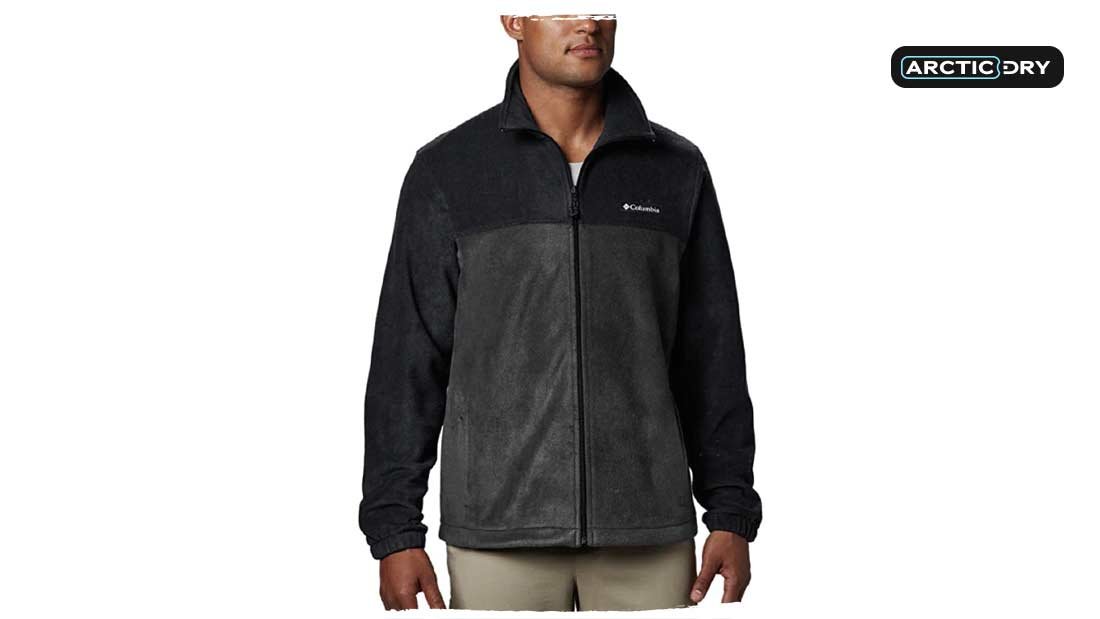
The Columbia Steens Mountain 2.0 is a great alternative for those who don’t want to spend a fortune on a mid layer jacket. Instead of paying 200+ pounds for the techiest synthetic insulation on sale, this jacket lets you spend less than 50 pounds while expecting reliable results.
You’ll find a better use for it on days when the weather isn’t super cold, and this is because of the relatively simple fleece construction it comes with.
This jacket is soft, inexpensive, and comes in a raft of colours to offer you a variety of choices. Despite its notably cheap price tag, you still get a reliable mid-layer option with an impressively comfortable fit.
However, there are a couple of shortcomings to note, which something you’d naturally expect from a cheap product. For instance, the materials used on the jacket are relatively basic with limited features.
The Columbia Steens Mountain 2.0 is also not as durable as other higher-end fleece alternatives, with the soft fabric being more prone to pilling.
Lastly, while the jacket is decently cosy, it also falls somewhere between the lightweight and midweight category, meaning you get limited warmth that may not be enough in colder hiking conditions.
If you’re planning a winter expedition in the outdoors, you’ll be better off opting for a pricier model on the market.
But for mild spring weather, the Steens Mountain 2.0 can be paired with an appropriate base layer to get the job done as is necessary. It also measures just 16.6oz, which makes it conveniently lightweight and comfortable to wear.
The North Face ThermoBall Eco
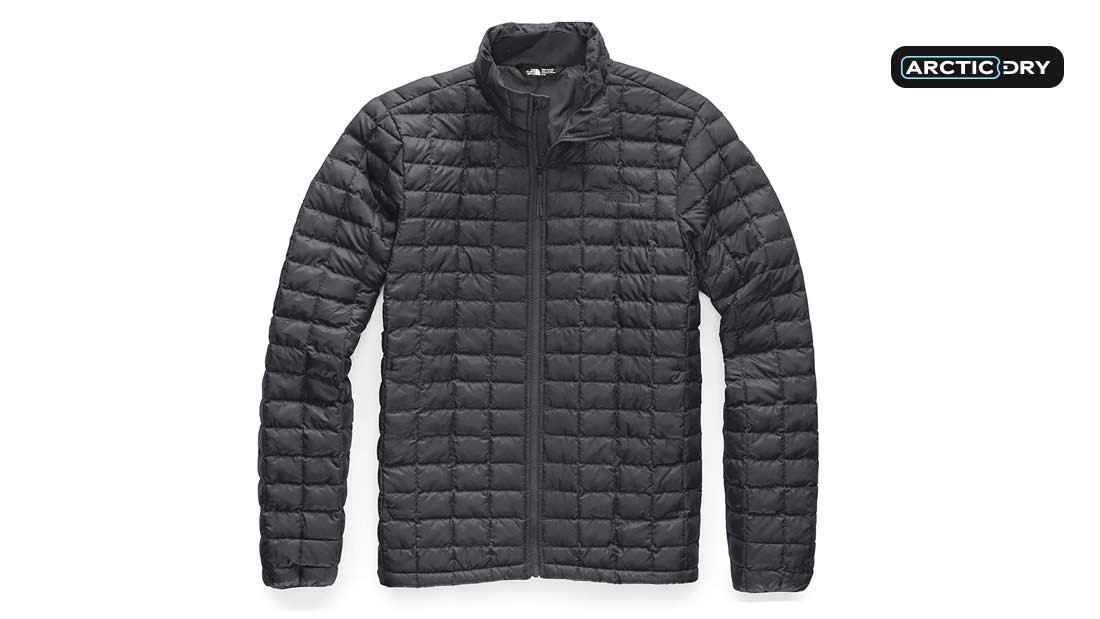
The Thermo Ball Eco produced by North Face is among the most popular and highly promoted synthetic jackets on the market. With PrimaLoft lending its expertise in the creation of the jacket, ThermoBall technology employs tiny round bunches of PrimaLoft thermal fibres inside the jacket’s baffles.
This results in the feel and looks of a lightweight down puffy jacket, although it falls as far as the warmth-to-weight ratio delivered is concerned.
Overall, the manufacturer still made a very impressive effort, and that’s why the jacket has experienced tremendous interest in the stores! The ThermoBall Eco comes with the same design as the Patagonia MicroPuff, but its weight is almost double at 15.2oz.
It is also heavier than the likes of Patagonia’s Nano-Air, so it may surprise you why it not as durable as the Nano-air down the line.
One thing that is going to impress you about the ThermoBall is the form-fitting fit. Overall, the jacket runs boxy and leaves some breathing space in the arms. As a mid-layer option, you can use this jacket for everyday wear thanks to its general practicality.
Mountain Hardwear Ghost Whisperer
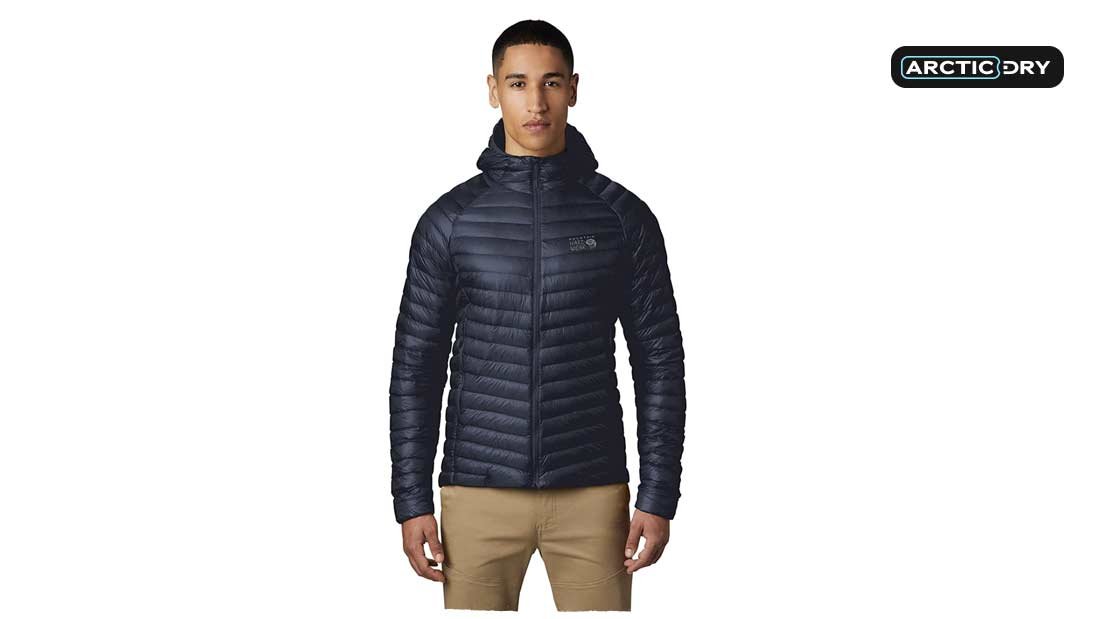
For a couple of years now, the Ghost Whisper from Mountain Hardwear has been the go-to ultralight insulator for those who have weight and space as their top priorities during hiking, Tipping the scales at only 8.3oz, this jacket barely adds weight to your hike gear and conveniently packs small when you’re not using it.
The outer shell is made up of 100% recycled materials, making for durable use down the line.
Meanwhile, you get to enjoy the longevity of down, which holds up better than synthetic insulating options. As far as the warmth-to-weight ratio is concerned, it doesn’t get any better than the Ghost Whisperer. This jacket is filled with 2.65oz of 800-down fill, making for a warm and toasty experience, although this is way less than the 3.14oz of 850-fill down stuffed in the Arc’teryx Cerium LT.
Although durability might not be the biggest concern when it comes to mid layers, the Patagonia Down sweater/s 20 by 30 D shell proves to be a more versatile option compared to the ultra-thin 10by 10D fabric used on the Ghost Whisperer.
Overall, this is a reliable mid layer that you can wear anytime you go out hiking, but its underwhelming durability and premium price tag make it a better choice for only the most discerning expeditions.
Icebreaker Descender
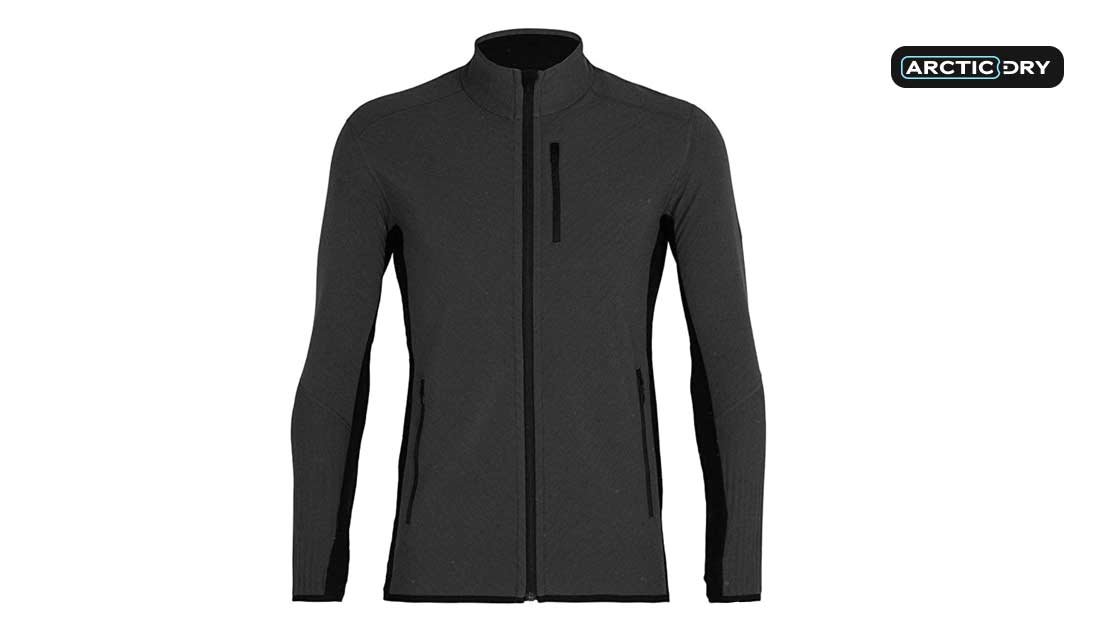
The Icebreaker brand is famous for its quality Merino Wool base layer, but it also manufactures a variety of other garments. A good example is this high-quality mid layer that you’ll be proud to add to your hiking wardrobe.
The Descender is very comfortable, which is the result of being brushed for extra softness. It also offers a high amount of stretch to make for a snug fit while ensuring that no draught enters through the hems.
You will appreciate the long cut at the top, as well as the thumb loops included on the arms, which ensure that your wrists are always covered. Overall, you enjoy a high level of warmth thanks to the 240g Merino Wool used.
There are two decently sized hand-warmer pockets on the side of the jacket for storage and one chest pocket with a hole where your earphones can go through.
The collar is another comfortable feature of the jacket, with just the perfect size to keep the elements at bay. However, there is no hood, which might be a bother for some and the zip pulls are smaller than we would have liked.
This means you’ll have a hard time trying to open them with gloves on. All in all, this is a practical piece of clothing, especially when you consider just how lightweight it is and how small it packs down.
Columbia Drammen Point Fleece
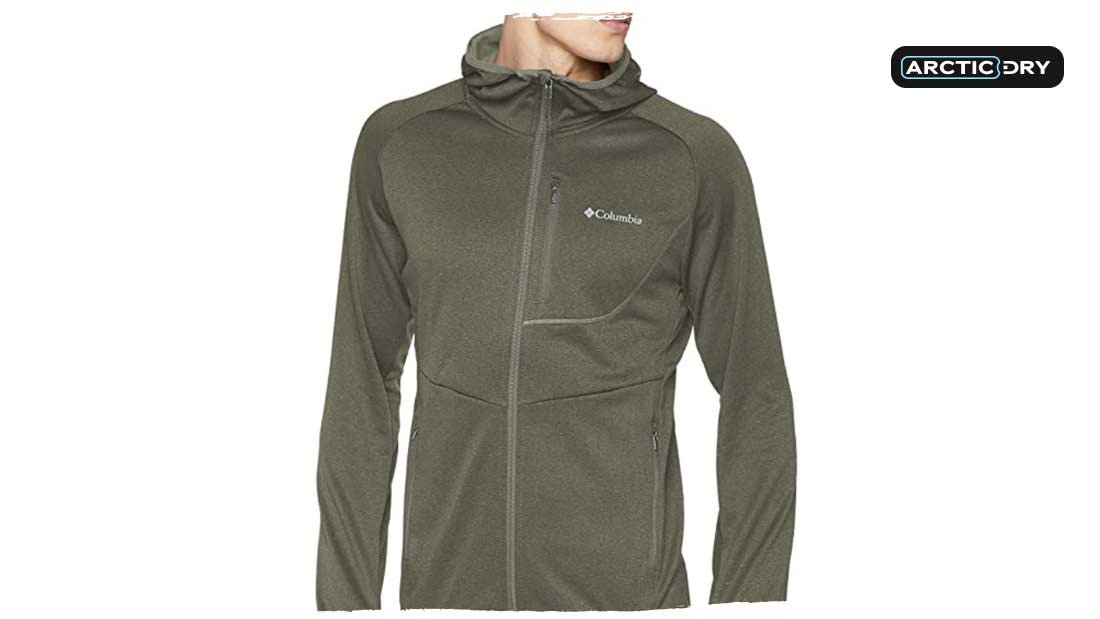
Roomy is the best word to use when describing the feel of wearing the Drammen Point Fleece jacket from Columbia. The fit is pretty comfortable and meant to allow you freedom of movement during your hiking excursions.
The generous fleece used inside the jacket helps to make for reliable warmth in cold hiking conditions. You’ll also like the high breathability when it gets a little bit too warm.
Small details like the handwarmer pockets and single chest pocket help to offer some storage capacity while the elasticated cuffs on the hood and sleeves keep the draught away.
There is also a smooth weave used on the outer fabric that feels nice to the touch and also enhances the overall aesthetics of the jacket. Also, the scuba hood helps to offer extra protection against the elements during hiking.
Another quality feature is the sweat-evaporating Omni-wick technology, which ensures there is optimal moisture control when your body starts to perspire.
Overall, the Drammen Point Fleece is a worthwhile contender for the best mid layer for hiking UK and this is thanks to its relatively low-price tag and good warmth-to-weight ratio.
Salewa PEDROC 2 HYBRID
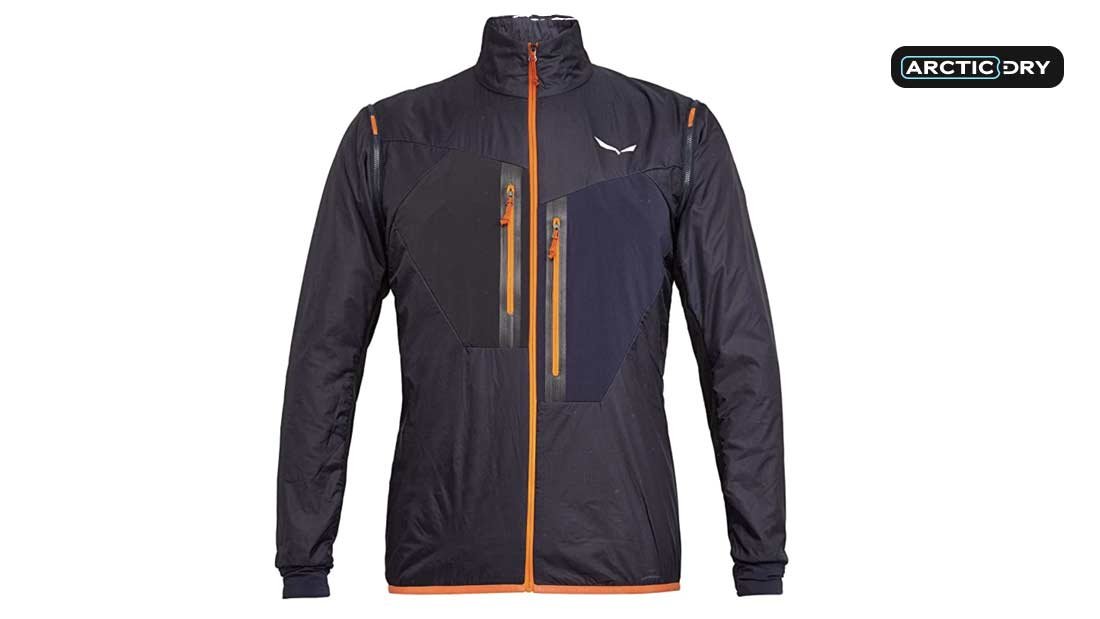
Salewa’s Pedroc 2 Hybrid is the last entry in our list of the best mid layer for hiking UK and comes with a raft of reliable features. Notably, this jacket is a little bit different from other options in the list, and this is because of its thin, soft shell instead of fleece.
This means you get a generally reduced level of warmth, making it more suitable for less cold hiking escapades where you need to move faster and lighter.
The jacket packs down to a small size and weighs just about 264g. This makes things easy for you when want to carry it in a backpack, allowing you to save extra space for other hiking gear.
The Pedroc 2 Hybrid is comfortable to wear and does a great job of protecting you from light showers and a cold breeze. It is a great choice for when you want to travel light without stopping too much on the way.
For a lightweight piece of gear, this jacket comes with some impressive features, including the zip chest pocket, elastic cuffs, and a close-fitting hood. The sleeves are also long enough not to ride up, although we wish the rest of the garment would be longer. Furthermore, you can find the Hybrid in a slew of animated colours such as yellow, blue, green, and black.
Patagonia Nano-Air Men’s Jacket
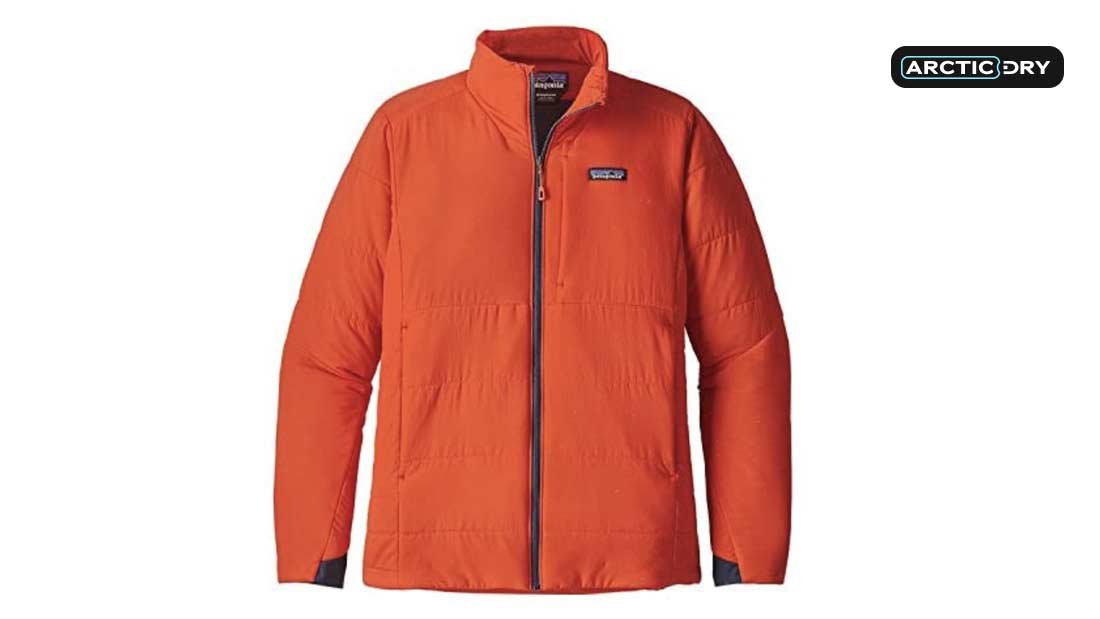
Made out of synthetic materials, the Patagonia Nano-Air is super-soft, breathable, and stretchy mid layer that feels more like a mix of a performance down puffy and your most beloved sweatshirt.
This leaves you with a versatile jacket that can be donned as a mid-layer during the winter season and a shell layer on those warmer summer days.
The breathability and flexibility make it a great option for climbers and backcountry skiers while its soft feel makes it a handy piece of gear for everyday use.
Although some of the previous iterations of this jacket don’t have a reputation of aging well, this latest update comes with a more durable outer that is made out of predominantly recycled materials. Overall, the Nano-Air is a lightweight jacket with solid insulating properties.
Although it won’t offer you the same warmth-to-weight ratio as down fill, it is still enough to keep the cold from biting. The model also packs some little down in the chest pocket, which makes packing it a slightly tricky process.
Nevertheless, you’ll be impressed by its 11.2oz weight, as well as the stretchy fabrics and articulated design for more freedom of movement. Lastly, the jacket will be a great choice for a range of activities, including skiing and travelling to snowshoeing.
Conclusion
The mid layer is an essential piece of your hiking gear that should not be overlooked if you look forward to having a comfortable adventure in the outdoors. There are so many options available for you in the market but the reviewed products are reliable best mid layers for hiking UK you might want to consider first.
FAQ
What Layers Should I wear for Hiking?
When setting out for a hike, try to equip yourself with a short sleeve base layer to make you comfortable with base layer pants or boxers.
You want to avoid burdening yourself with too much material as this will add heat and unnecessary friction when you start moving. Considering the state of the weather, you may get away with just wearing the base layer on its own.
Is Down a Good Mid Layer?
Down mid layers can be the perfect option when hiking in dry and icy conditions. This is because they suit nicely stand-alone layers in dry regions before temperatures start to fall.
Unfortunately, down isn’t as breathable as other options like fleece but does a nice job of reducing output aerobic activities whenever insulation is necessary.
Is Cotton a Good Mid Layer?
Cotton can work just fine as a mid layer material, as long as you manage to keep it away from moisture. But given that you’ll be wearing the fabric between two other fabrics, moisture shouldn’t be too much of a worry as it is protected from sweat, as well as moisture from outside.
The key here is to find a proper wave; something like a flannel or chamois.
Is Fleece Warmer than Wool?
Generally speaking, wool offers better insulation against the wind. Fleece may also be a reliable option when it is incorporated with wind-resistant insulation.
Overall, both wool and fleece are warmer than most alternatives you can find and offer more reliable water-resistance properties. Lastly, they remain warm even when they get wet and wick out sweat better than fabrics like cotton.
What is the Warmest Mid Layer?
The warmest mid layer currently on the market is the Summit L3. This sleek-looking and lightweight synthetic jacket comes with a minimalist design, as well as one chest pocket and a nice hood to protect your face from cold winds.





